NYC’s Forgotten ‘War on Christmas Trees’
Discover how an obscure holiday crackdown affects festive street vendors today!



Parks are being touted as a place to get fresh air during the coronavirus crisis, although it is recommended that you keep the same precautions: keep social distance (at least 6 feet) from others and take extra measures to protect yourself. And perhaps opt for some of the largest parks in the city. Here are the twelve largest parks in New York City, which are conveniently almost equally distributed by borough.
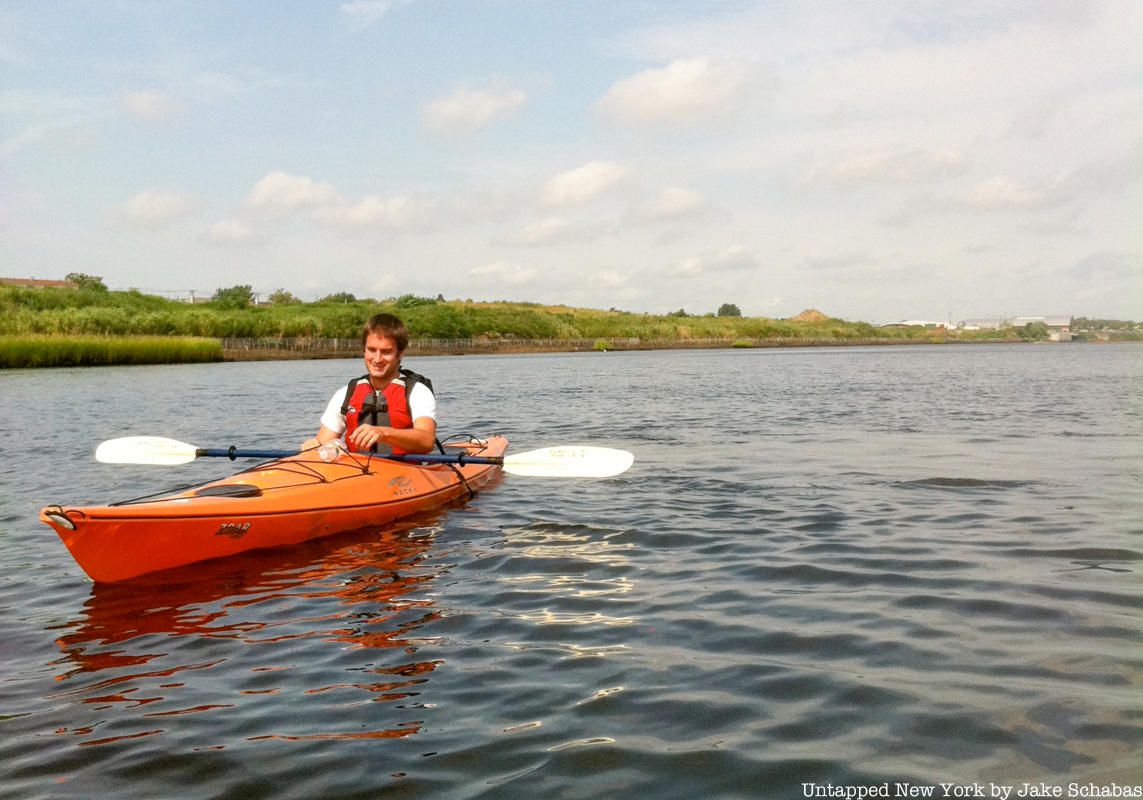
Though it does not usually appear on many lists for largest city parks, what NYC Parks terms Jamaica Bay Park is over 19,000 acres — larger than any on this list and nearly the size of Manhattan. It’s different from the other parks in the sense that it encompasses an entire estuary including waterways, wetlands, meadowlands, and ponds, crosses boroughs, and is made up of discrete swaths and sections all along the southern Brooklyn and Queens waterfront. But it’s a great way to get out in nature and be pretty isolated.
It’s all technically part of the Jamaica Bay Unit of the Gateway National Recreation Area under the jurisdiction of the National Park Service, which includes Bergen Beach, Canarsie Pier, Floyd Bennett Field, Plumb Beach, Shirley Chisolm State Park, Spring Creek, Breezy Point Tip, Fort Tilden, Frank Charles Memorial Park, Hamilton Beach Park, Jacob Riis Park, and the Jamaica Bay Wildlife Refuge.
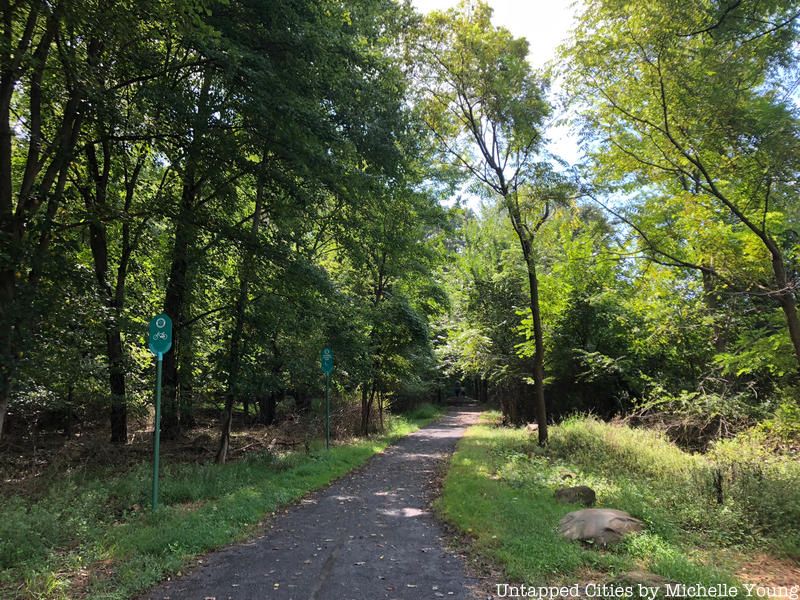
As its name implies, the Greenbelt is 3,000 acre network of connected parks and trails that form a massive belt around the middle of Staten Island. After the opening of the Verrazano-Narrows Bridge in 1964, Staten Island residents and nature lovers feared that the borough’s wetlands and forests would soon be lost to developers (Their fears were not unfounded, as Robert Moses had planned to extend Richmond Parkway right through the site of today’s High Rock Park). After 20 years of negotiations, the Greenbelt was finally designated parkland in 1983.
Ironically, the Greenbelt’s Moses’ Mountain is named after the Parks Commissioner who opposed the park’s existence. The 260-foot mound of rock and soil was made from a section of road cut from the Staten Island Expressway that was originally intended to be used to construct Richmond Parkway. Since Richmond Parkway was not extended, the unused mound has gradually become overtaken with grasses, trees, and wildlife.
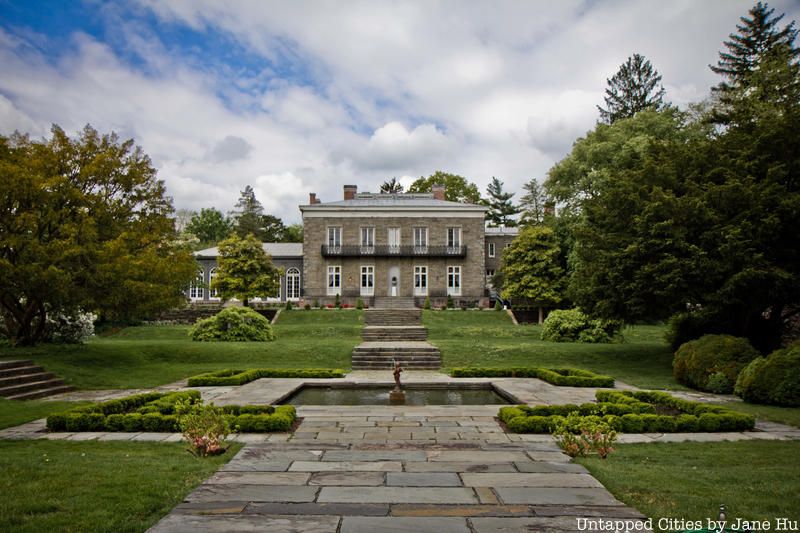
At a whopping 2,765 acres Pelham Bay Park in the Bronx is the largest park in New York City. Like the city’s other massive parks, Pelham Bay Park has the room and facilities to accommodate both sports and nature enthusiasts. But what sets it apart from the other parks is Orchard Beach, the Bronx’s only public beach, a man-made oceanfront created by Robert Moses.
Long before becoming a place of recreation, the parkland was the site a short lived colony founded by Anne Hutchinson, a former Puritan settler. The land would later become part of Pelham Manor and the site of the Revolutionary War Battle of Pell’s Point in 1776. According to the Friends of Pelham Bay Park, the stone walls American troops hid behind as they attacked the British forces are still present within the park’s golf course. Other spots to visit include the Bartow-Pell Mansion, a World War I statue, and a statue that is the remnant of a demolished athletic facility. Read more about what to check out in Pelham Bay Park here.

When Freshkills Park on Staten Island fully opens, it will be the third largest park after the Greenbelt at 2,220 acres. But for now the title goes to Van Cortland Park in the Bronx. The Bronx is made up of 25 percent parkland, so it’s no surprise that two of New York City’s biggest parks are located in the borough (although the concentration of the parkland leaves most of the Bronx with less walkable access to parks than other boroughs). Van Cortlandt Park is made up of over 1,146 acres of playing fields, playgrounds, and dense forests.
The park is also rich in history: in addition to being the site of the 1778 battle of Kingsbridge where Stockbridge Mohicans died fighting for the Patriots’ cause, the park is also home to the Van Cortlandt House, the oldest house in the borough. Additionally, during the Revolutionary War, vaults in the Van Cortlandt burial ground were used to stash important New York City records for safekeeping.
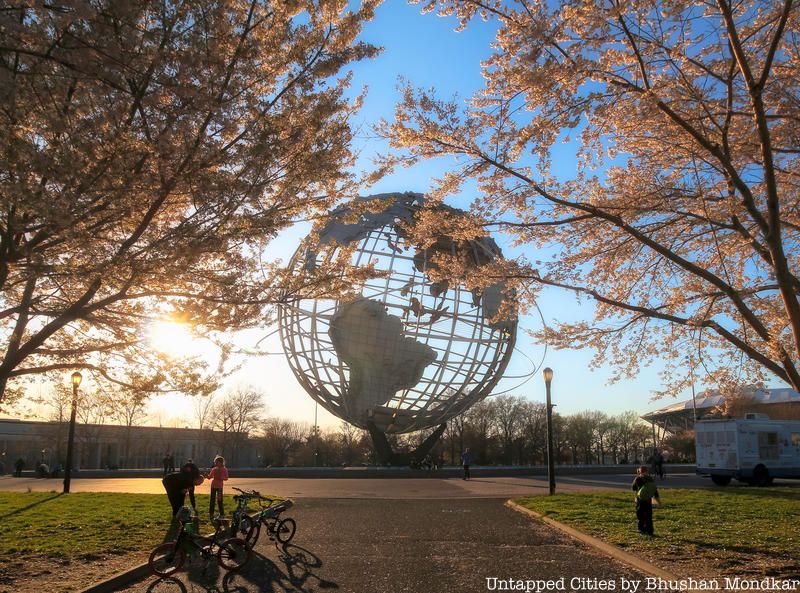
At 898 acres, Flushing Meadows-Corona Park is only slightly larger than Central Park, but it proudly holds the title of the largest park in Queens. Queens residents can also be proud that the park was the site of the World Fair in 1939 and 1964, and that it has been the venue for the U.S. Open Tennis Championships for the past 50 years. Today, park visitors can still see remnants from the World Fairs, including the New York State Pavilion, Meadow and Willow Lakes, and the iconic Unisphere.
The latest reason to check out Flushing Meadows-Corona Park is the public art installation by Zaq Landsberg, “Islands of the Unisphere,” part of the UNIQLO Parks Expressions Grant program. Landberg expanded on the Unisphere by choosing islands off of the Unisphere, recreating them at scale, and placing them horizontally on the grass.
Join us for our next tour in the distant future of the Remnants of the World’s Fair in Flushing Meadows-Corona Park:
BOOK NOW
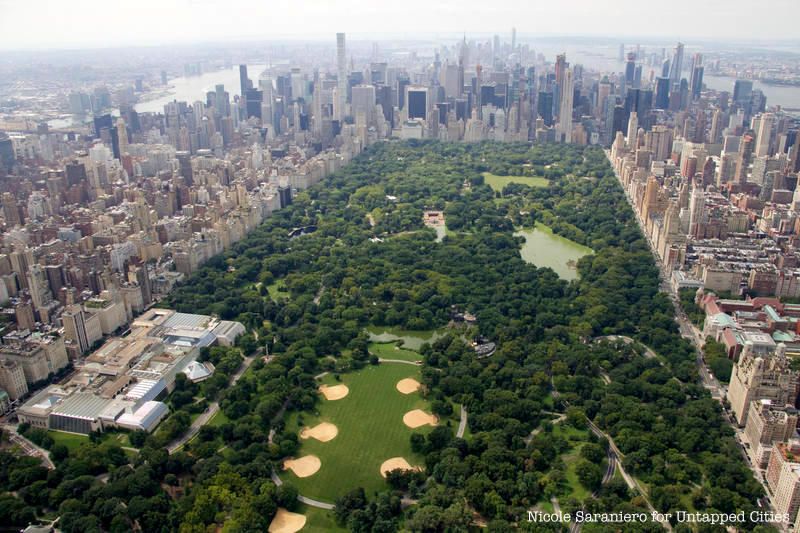
Central Park clocks in at 843 acres and although it is not the city’s largest park by far, it is larger than the principality of Monaco. Central Park was not laid out in the 1811 Commissioner’s Grid for New York City but some early foresight ensured that this bounty of open space was preserved before Manhattan was totally developed.
Central Park is certainly the largest park to be found in Manhattan, taking up six percent of the borough’s land area. Perhaps one of the ways to see as few people as possible in Central Park is to go hunting for secrets in a very random path. Use our guide to the Historical Remnants and Ruins of Central Park as a starting point!
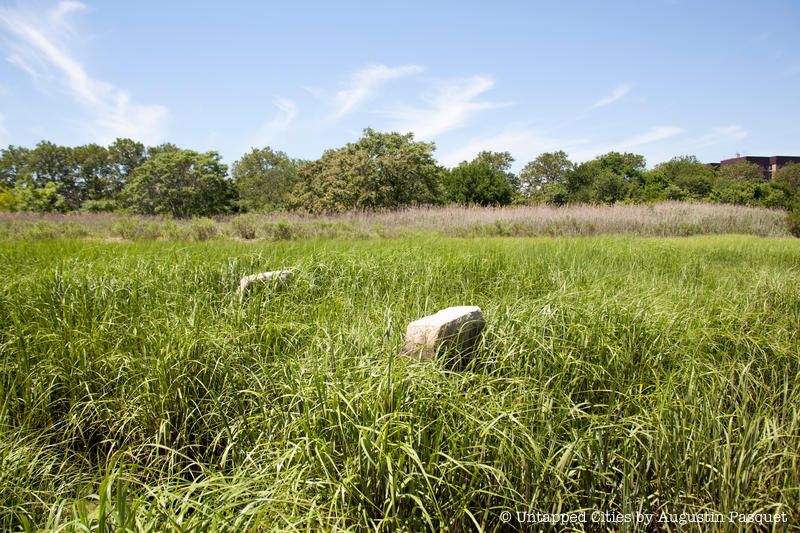
Marine Park on the southern Brooklyn waterfront is the borough’s largest park at 798 acres and includes a salt marsh, nature trail, remnants of a colonial mill, a man-made island. Walking through the reeds, you’ll be transported out of New York City, fast.
The Gerritsen Creek (or what remains of it after infill further inland) leads out to Jamaica Bay, and as such, Marine Park is protected as a Forever Wild Preserve for its unique habitat.
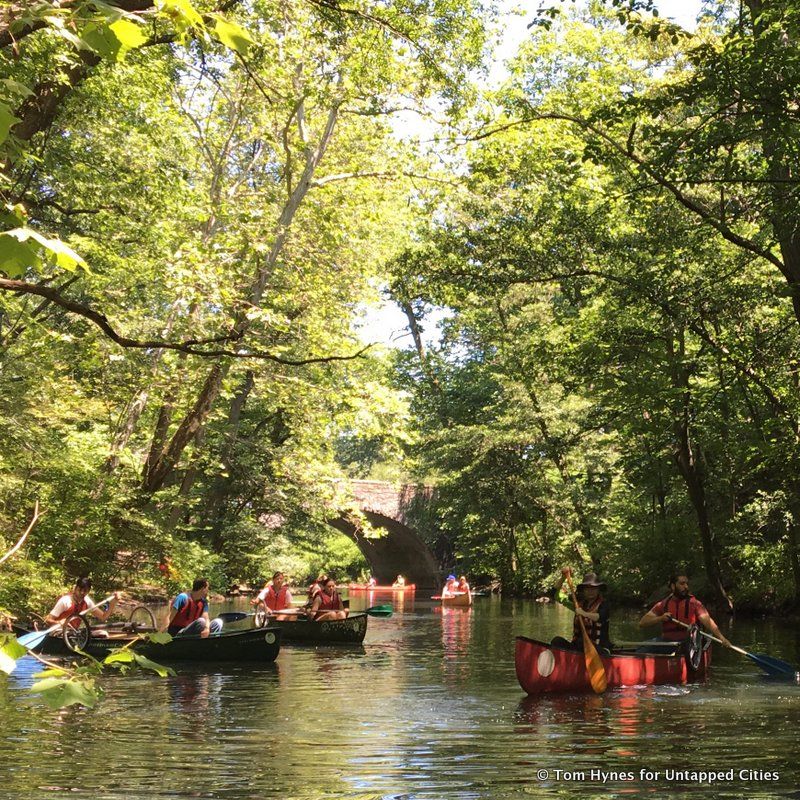
Bronx Park, at 718 acres, has a lot of gems within. The Bronx River flows through it, there are two lakes, and the New York Botanical Garden and Bronx Zoo are within it (although both are currently closed for coronavirus). The northern part of Bronx Park is also a Forever Wild Preserve.
There are also a lot of recreational options, including hiking, kayaking, sports fields, and more (check NYC Parks to see what is still open).
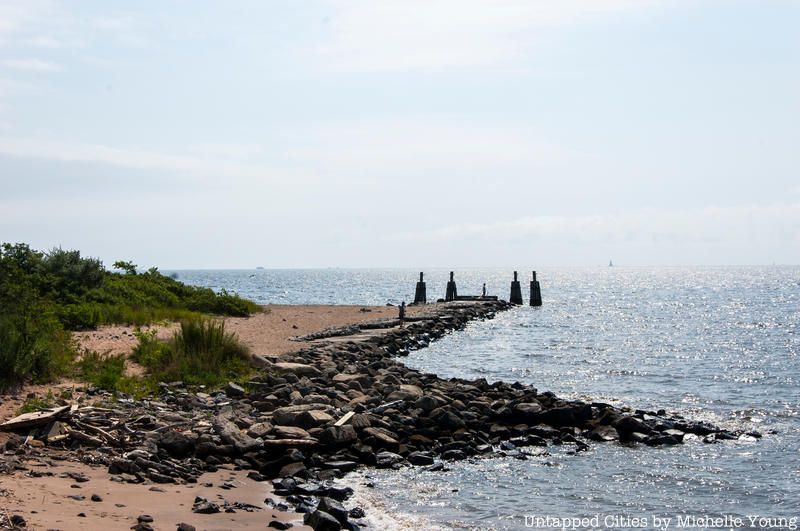
Back on Staten Island, the collective area of the Franklin D. Roosevelt Boardwalk which extends from Fort Wadsworth to Miller Field’s Gateway Recreational Area, and South and Midland Beaches is 638 acres.
Miller Airfield, which even during non coronavirus crisis, is pretty sparsely visited. You will find there an abandoned airfield, buildings and lighthouse, the beach pictured above on the waterfront, and other gems.
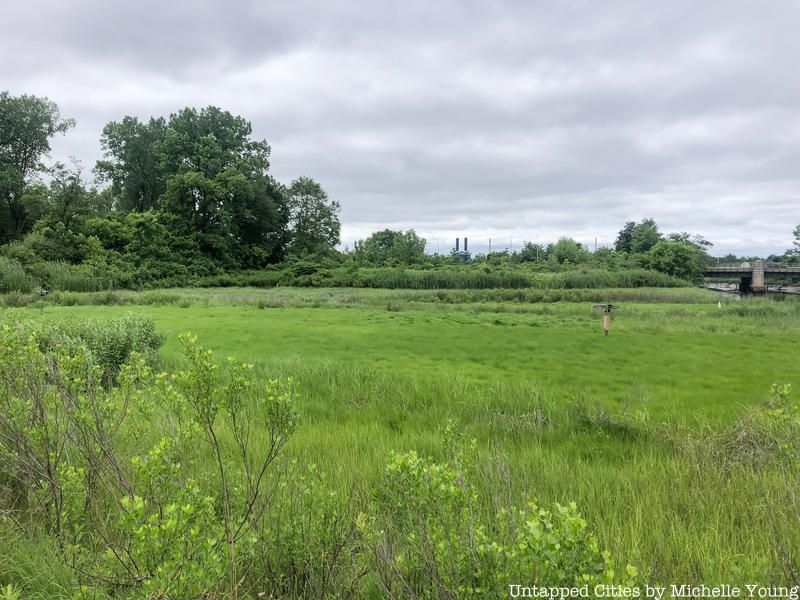
Alley Pond Park is the second largest park in Queens at 636 acres. The marshy park is very raw and wild, and you can find some cool things like the oldest and tallest tree in New York City, and a Dutch windmill.
Read more about the secrets of Alley Pond Park here.

Forest Park in Queens is 544 acres and has the largest continuous oak forest in the borough. Part of the proposed Queensway linear park goes through Forest Park. The park was designed by landscape architect Frederick Law Olmsted, best known as the designer of Central Park and Prospect Park, which he developed alongside architect Calvert Vaux.
In the late 19th century, when Olmsted surveyed the land to construct Forest Park, he purposely designed the space so that it would maintain its “pastoral quality.”
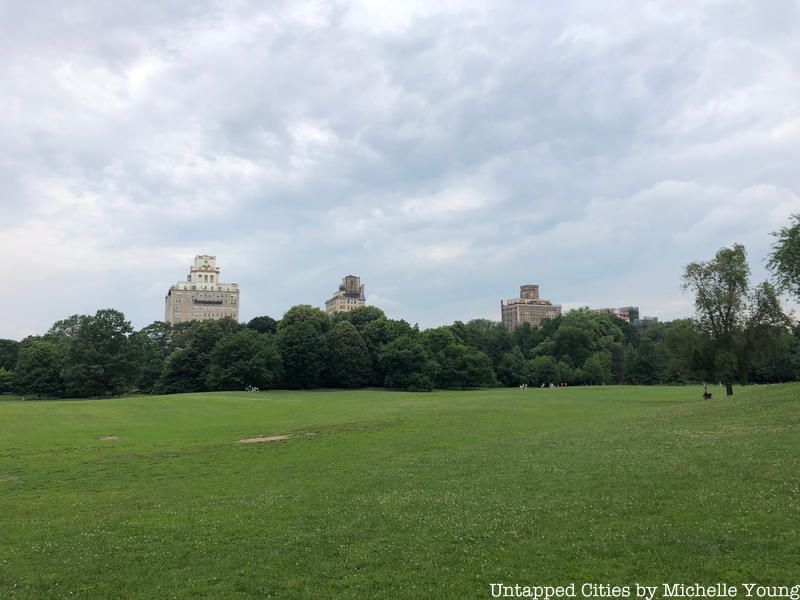
And since Brooklyn only appeared once on this list, there’s always Prospect Park which is 526 acres. Along with the Long Meadow (above), there are plenty of places for solitude in this park. Things to discover in the park: remnants of the American Revolution.
Next, check out the 10 oldest parks in NYC.
Subscribe to our newsletter